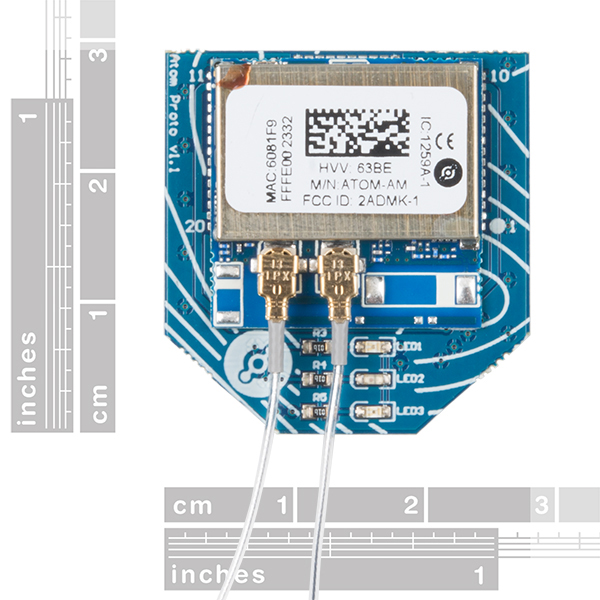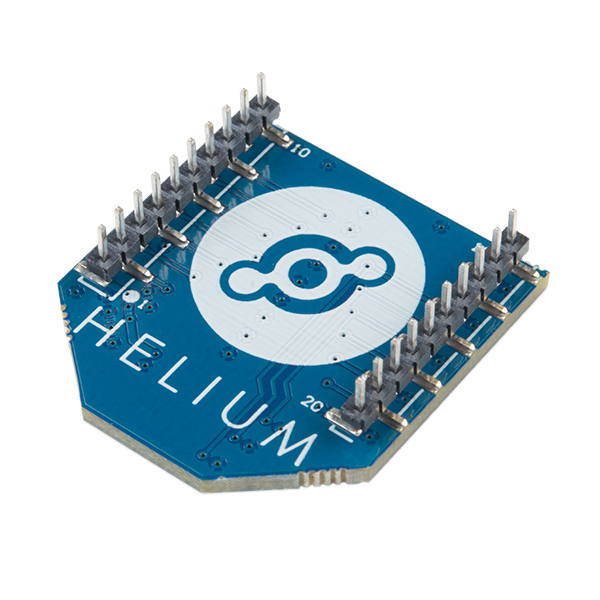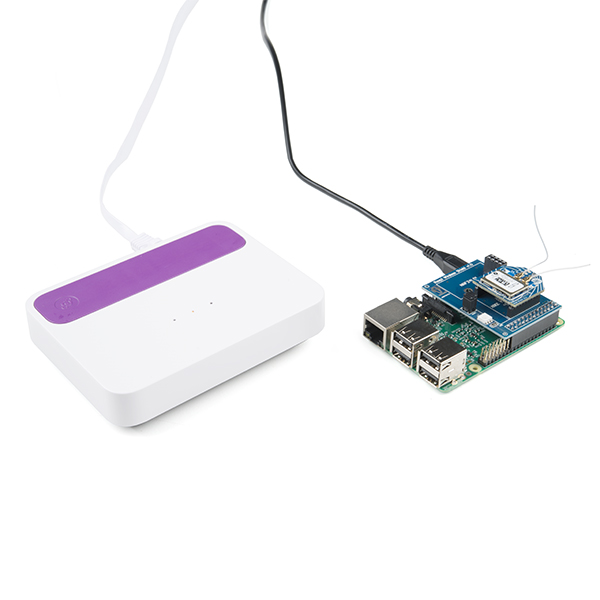Helium Atom Prototyping Module
The Helium Atom Prototyping Module is a low-power, dual-band wireless module perfect for developers. The pin layout is compatible with many existing embedded devices. Atom devices connect to the nearest Element Access Point using Helium's wireless technology, which allows those boards to communicate long distances with little interference and requiring no device-level configuration.
Each Atom operates in the 2.4GHz and 915MHz bands in North America and 2.4GHz and 868MHz bands in Europe. The Atom module is powered by Atmel’s integrated Cortex-M0+ ATSAMR21G18A, AT86RF212B and SkyWorks FEMs. The Atom also supports U.FL connectors for external antenna connections for use with any choice of antenna, provided their performances don’t exceed the certified dipole antenna gains of 3dBi (868MHz/915MHz) and 2.3dBi (2.4GHz).
The Helium Atom is the only dual-band, long-range, low-power, hardware-secured IEEE-standards-compliant module available today. Each Atom has a uniquely provisioned hardware root to help ensure that you can always trust the device and its data to be authentic at all times.
Since Helium is a complete toolkit for building IoT applications that can connect to public clouds, a pre-built, secure connection from Atom modules interacts with what are called Helium Channels. Channels are a convenience layer between sensors and your organization’s cloud of choice that can connect to public clouds like Amazon Web Services, Azure, Google Cloud IoT Core or a private offering. Channels can also be used to send device data to applications and services via generic protocols like HTTP and MQTT.
- Networking Standards: IEEE 802.15.4
- Wireless Connectivity: 802.15.4 IEEE Standard on dual-band radios
- 915MHz & 2.4GHz (U.S.)
- 868MHz & 2.4GHz (E.U.)
- Security: Hardware-based encryption, authentication and authorization
- Operating Temperature: -40° to 185°F (-40° to 85°C)
- Certifications: FCC ID: 2ADMK-1 & IC ID: 12590A-1
- Voltage Range: 2.0V to 3.6V (3.3V typical; 2.4V recommended minimum for full TX power at 915MHz)
- Dimensions: 1.06" (27mm) x 1.1" (28mm)
Helium Atom Prototyping Module Product Help and Resources
Three Quick Tips About Using U.FL
December 28, 2018
Quick tips regarding how to connect, protect, and disconnect U.FL connectors.
Core Skill: Programming
If a board needs code or communicates somehow, you're going to need to know how to program or interface with it. The programming skill is all about communication and code.
Skill Level: Rookie - You will need a better fundamental understand of what code is, and how it works. You will be using beginner-level software and development tools like Arduino. You will be dealing directly with code, but numerous examples and libraries are available. Sensors or shields will communicate with serial or TTL.
See all skill levels
Core Skill: Electrical Prototyping
If it requires power, you need to know how much, what all the pins do, and how to hook it up. You may need to reference datasheets, schematics, and know the ins and outs of electronics.
Skill Level: Rookie - You may be required to know a bit more about the component, such as orientation, or how to hook it up, in addition to power requirements. You will need to understand polarized components.
See all skill levels
Comments
Looking for answers to technical questions?
We welcome your comments and suggestions below. However, if you are looking for solutions to technical questions please see our Technical Assistance page.
Customer Reviews
5 out of 5
Based on 1 ratings:
Excellent
Excellent





So is this long term hardware? Wanting to develop solutions for 15 remote locations but can't find any reliable info nor people using this hardware... esp and Lora look 👀 better...